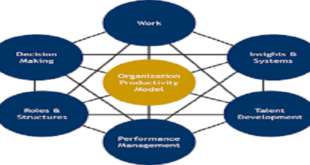Introduction
The customer market domain addresses three broad groups: direct buyers, intermediaries and final consumers. To illustrate these groups, consider a manufacturer of domestic appliances. This manufacturer sells to a number of approved wholesalers, who in turn sell these products to retail outlets. Finally, these retail outlets sell the appliances to individual consumers. In this example the term Buyer refers to the wholesaler. The wholesaler who sells to the retailer is termed the Intermediary. The individual who purchases the appliance from the retailer is termed the Consumer. The term ‘customer’ will be used generally in this chapter to apply to all these groups.
Buyers, intermediaries and consumers
The terms Buyers, Intermediaries and Consumers are used in a specific sense in this chapter. They represent commonly used terminology in describing the customer market domain. However, it should be recognized that some organizations may use these terms in other ways or use different terms. For example, professional service firms and organizations in the healthcare sector typically refer to clients
For example, in the insurance industry brokers are a typical means of distribution of the insurance products developed by an insurance underwriting company. The channel consists of the underwriting company who appoints insurance brokers who in turn sell the insurance products to final consumers. These consumers may be organizations or individuals.* Here there are only two levels in the distribution chain. In this case the insurance broker is usually termed.
Many organizations adopt multiple channels in seeking to serve the final consumer, whilst others use only one channel. For example, some insurance companies, such as Direct Line, market directly to the final consumer. Other insurance companies sell both through the traditional broker channel as well as selling direct. For example, Guardian Royal Insurance, a large UK composite insurer, markets indirectly to final consumers through a large network of insurance brokers. However, it also has a separate division, Guardian Direct, which markets directly to final consumers.
Segmentation and analysis of the customer market domain
Market segmentation is a process of dividing up a broad generic market into a number of smaller groups, or market segments, based on characteristics or responses of customers in those segments. In the past much market segmentation has been done using very broad segments; in some cases organizations have undertaken no real market segmentation at all. Segmentation needs to be performed at all levels of the customer market domain, not just with the organization’s direct buyer.
Reviewing marketing emphasis within the customer market domain
A key issue for a company considering a relationship marketing programme is to undertake a detailed market analysis at each level in its value delivery network and identify the type of marketing activity that needs to be directed at each of the various channel members, including direct buyers, intermediaries and final consumers. Then further analysis, in terms of the segmentation and understanding the decision-making units of different levels, needs to be completed before determining the appropriate amount of marketing expenditure and effort that is relevant at each level.
Summary
Traditional marketing activity has focused on direct buyers – how to win them, and what kind of offer to make to them. Relationship marketing broadens the perspective of where marketing should focus, recognizing that success with the direct buyer is also dependent on managing relationships with the intermediaries and consumers in the distribution chain. Increasingly organizations will need to make regular reviews of their value delivery network and determine the appropriate use of channels and channel members in order to maximize the lifetime value of attractive segments within the final consumer group. Organizations seeking to improve their relationship marketing will seek to develop appropriate segmentation strategies for direct buyers, intermediaries and final consumers. They will also seek to develop more specific and targeted marketing segmentation by moving towards micro-segmentation and, in some cases, to one-toone marketing. A regular and informed review of marketing emphasis and marketing spend on both customer attraction and customer retention needs to be conducted. Market maps are a useful tool in helping to understand and define volumes and values which are sold through different elements of the value delivery network. Central to the successful relationship marketing process will be an understanding of the decision-making unit at all levels of the value delivery network.
 Thefashion2day Popular Fashion News Website
Thefashion2day Popular Fashion News Website




